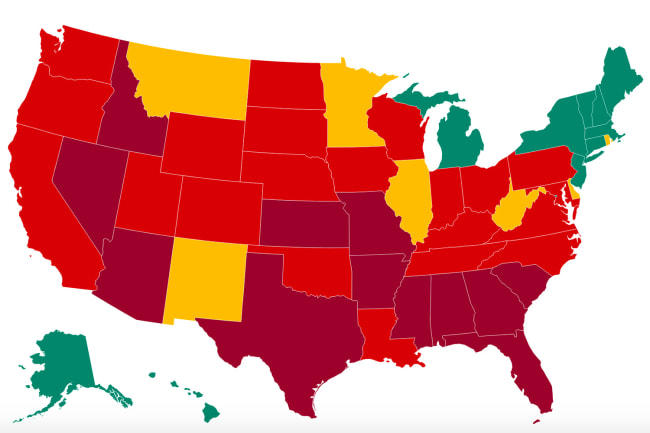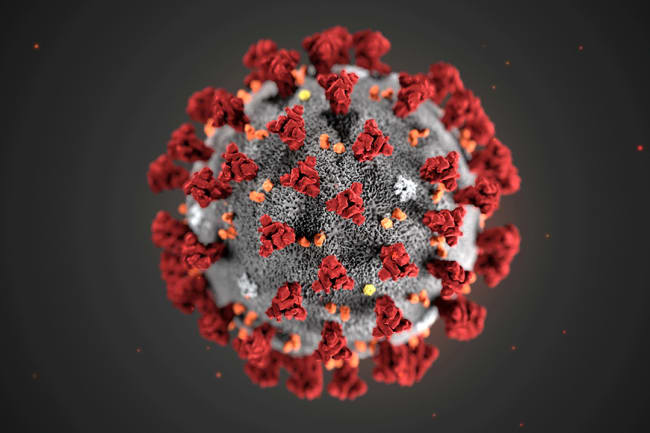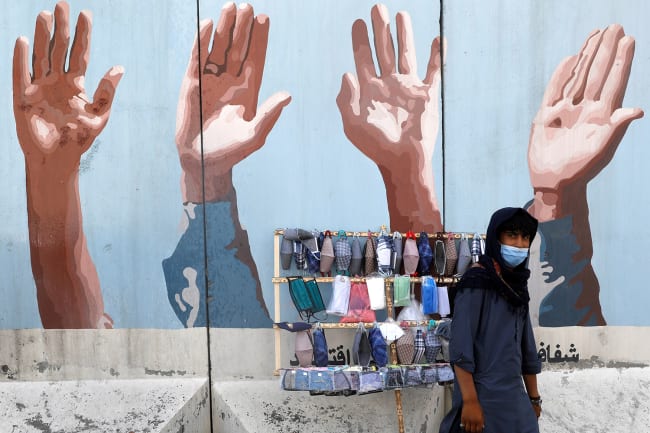Editor's Note: This article is adapted from a blog post at Resolve to Save Lives that summarizes a series of tweets sent by the author at the end of last week—a regular weekly round-up on the COVID-19 pandemic, with a focus on the latest epidemiological data in the United States. Last week's tweets focused on American schools and the challenge of safely reopening, the fact that COVID-19 is on track to become the third-leading cause of death this year, and the towering uncertainty over vaccines. The author also calls for working together to make progress against the virus—the one true enemy.
We're a long way from safety
Deaths continued to increase last week, although we're starting to see some decreases in case rates in some states. Even with these decreases, rates in much of the United States are very high and staying high. The bottom line of this week's review of the epidemiology of the COVID-19 outbreak in the United States: we're a long way from safety. Faced with the decision to close bars or open schools more safely, lots of states chose to keep bars open.
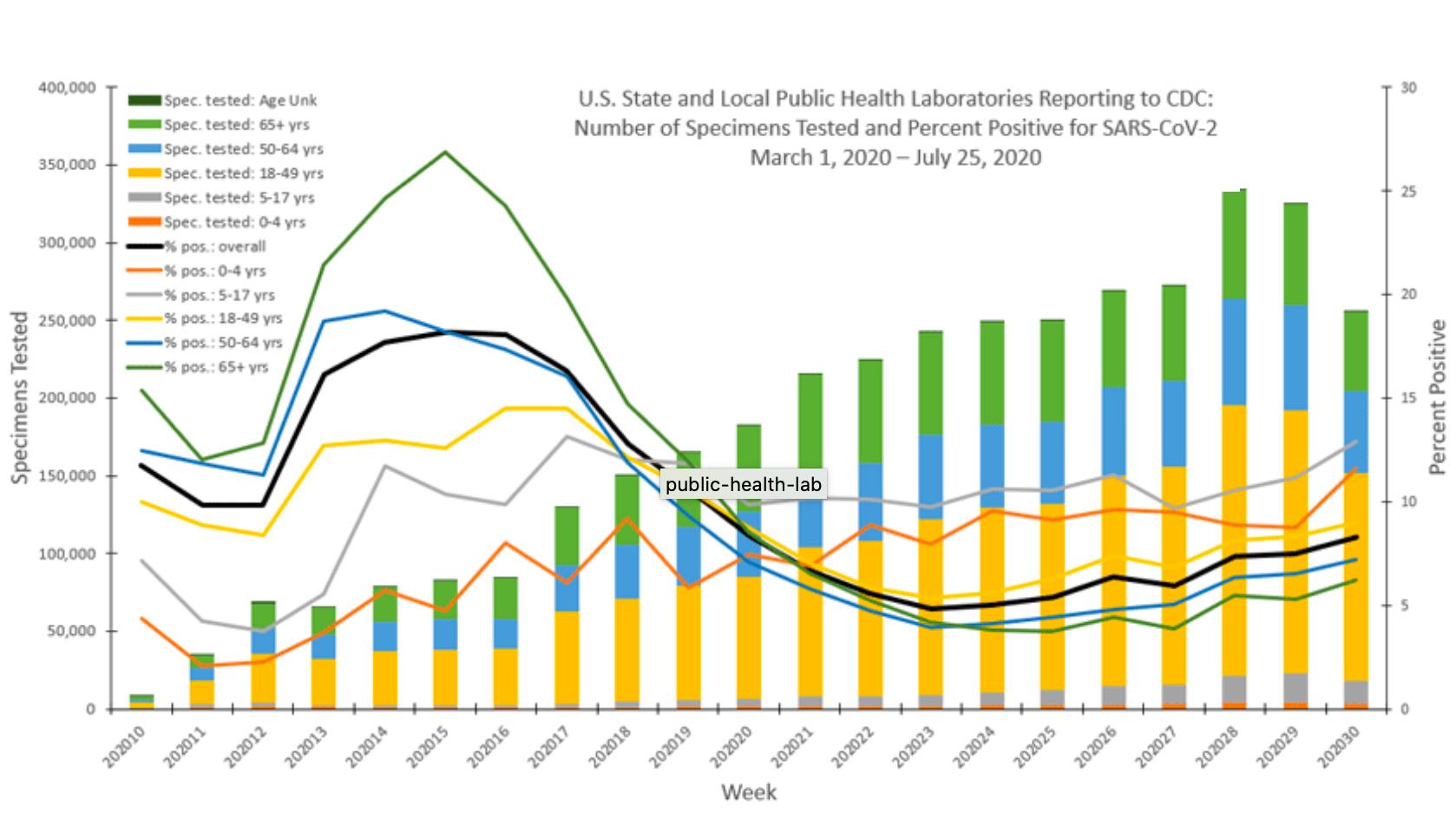
Overall, test positivity is stable. It's decreasing in the South (but still very high) and increasing in the Midwest. There are different trends from different types of labs, but from public health labs, we can see increases in kids, especially ages 0–4 and 5–17 (gray, orange lines). This is not promising for re-opening schools this month or next.
We shouldn't pay a dime for any test that takes more than 72 hours to return a result
The testing charade continues. We shouldn't pay a dime for any test that takes more than 72 hours to return a result. Every state and county should report publicly the proportion of tests with results within 24 and 48 hours. This information exists and the public has a right to access it. What gets measured—especially what gets measured publicly—can get managed. Emergency department visits for flu-like and COVID-19-like illnesses are decreasing overall, but increasing in some areas. The epidemic is cresting in many areas, but still spreading at a high level. The United States is a global outlier.

It "only" took six clicks for me to find this hospitalization information on HHS Protect, the federal government's new home for this crucial data. Oh, and it was last updated July 23—11 days ago. HHS has committed that this will be better than the CDC system, and updated daily. Still waiting to see that happen. Let's hope it gets better—all of us would be safer.
COVID-19 will likely be the third leading cause of death in the United States in 2020
The percentage of deaths from pneumonia, influenza or COVID-19 decreased last week, but remains above baseline. More than 153,000 deaths have been reported across the United States. Projections are now all over the place, but we know one thing for sure: we've seen way too many preventable deaths. COVID-19 will likely be the third leading cause of death in the United States in 2020.
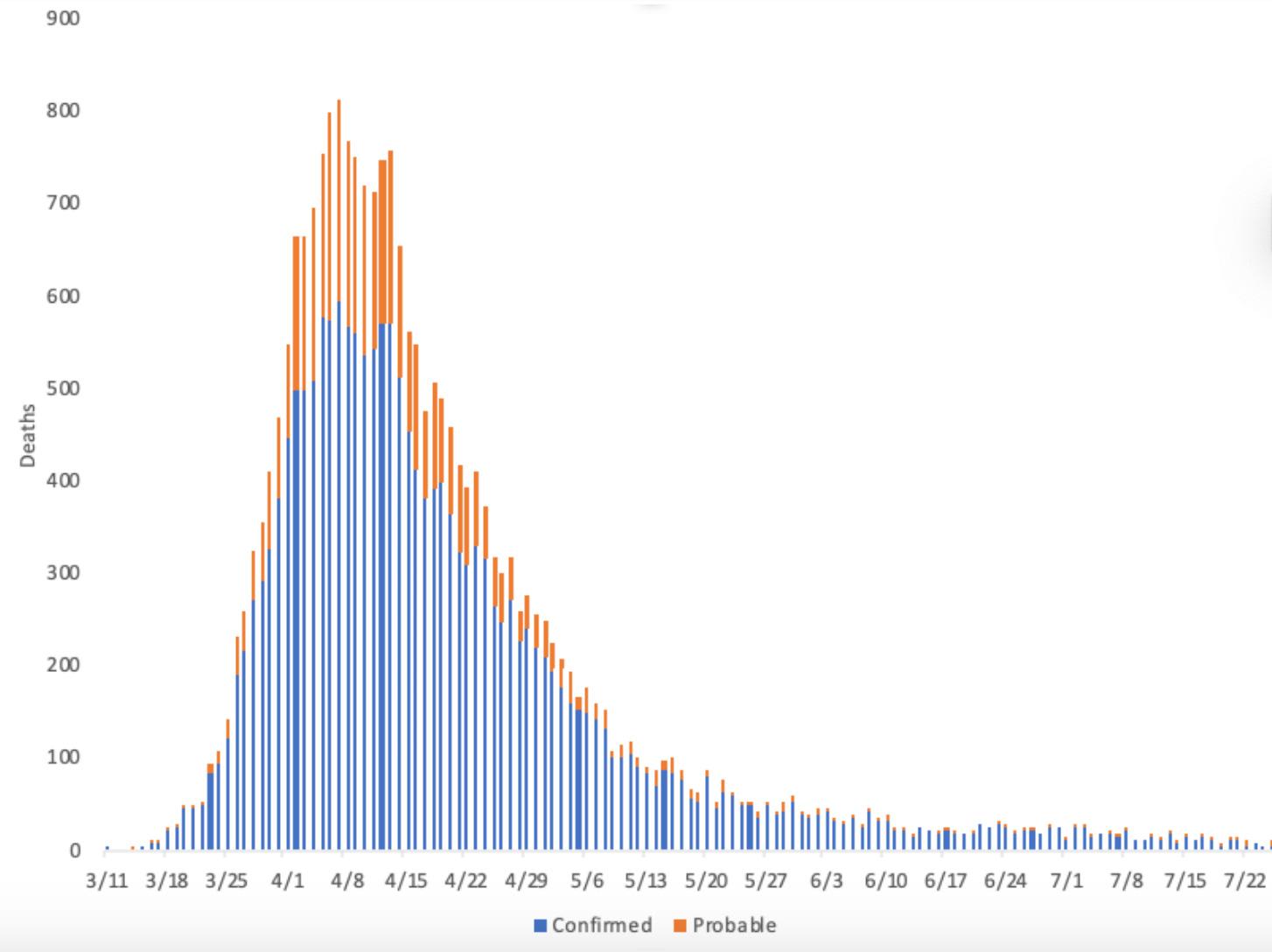
Here's some important information from the New York City Health Department's website: deaths by date of death. The long tail on this graph represents, mostly, lingering deadly infections. How much disability and pain "long-haulers"—people with long-term harms from COVID-19—will experience remains to be seen.
Deaths per Million People, Cumulative
Outside the United States, there are horribly high and increasing death rates in Latin America
We're now in August, when many families enjoy the end of summer and turn their attention to going back to school. Opening schools is easy. But keeping them open? That's only possible if COVID-19 is controlled and schools adapt. Closed schools mean a closed economy, closed minds, and long-term losses in child development.
Closed schools mean a closed economy, closed minds, and long-term losses in child development
Many people have pinned their hopes on a vaccine as a silver bullet to end the pandemic. As I wrote in the Wall Street Journal last week, there's been encouraging data from preliminary studies, but in reality most vaccines don't make it to actual approvals, most of the vaccines under development use unproven technologies, and we still don't know if any will work and be safe. There are many hurdles for vaccines to clear, most notably determining whether they are safe, how well they actually protect people, whether they are equally effective in different groups of people, and how long their protection lasts. Even after all those questions are answered, one of the most important remaining ones is how do we actually get them to people?

We must be frank and restore the public's trust. Working together is the only way we'll be able to make progress against the virus. There's still only one enemy: the virus. And the more we're divided, the more it will exploit those divisions to conquer us.

